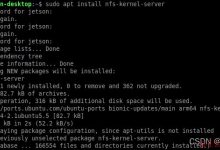完整格式支持链接:https://blog.imakiseki.cf/2022/02/27/techdev/linux-time-operations-and-sync/
本文将以 Arch Linux 为例,讨论 Linux 的时间操作和同步方法。
本文围绕 Linux 的时间将 ArchWiki 上 System time 页面的部分内容做简化,并整理其他文章作为补充,简化理论性,增强可操作性。
概述
操作系统的时间 (clock) 由三或四部分决定:
- 时间值;
- 是否为 UTC 时间;
- 时区;
- (如果有)夏令时。
而操作系统的时间一般有两种:硬件时间和系统时间。
硬件时间
硬件时间 (也即真实时间 (Real Time Clock, RTC) 或 CMOS 时钟) 一般只存储时间值,直至 2016 年后 UEFI 硬件支持对时区和夏令时的存储。
系统时间
系统时间 (也即软件时间) 可以追踪时间值、时区以及可能存在的夏令时。系统时间由 Linux 内核计算,时间值为 UTC+0 下自 1970 年 1 月 1 日午夜至今的秒数——可以在 time.is 网站查询得到。
尤其需要注意的是:操作系统完全启动后,系统时间与硬件时间是独立的。
读取
状态
Linux 的时间状态可由
timedatectl
或
timedatectl status
命令获取。输出类似于:
Local time: Sun 2022-02-27 12:52:24 UTCUniversal time: Sun 2022-02-27 12:52:24 UTCRTC time: n/aTime zone: UTC (UTC, +0000)System clock synchronized: yesNTP service: activeRTC in local TZ: no
我们可以得知:
- 本地时间值和 UTC 时间值均为 Sun 2022-02-27 12:52:24 UTC;
- 硬件时间不存在;
- 时区为 UTC (UTC+0);
- 已经开启系统时间同步。
硬件时间
上方的示例中硬件时间 (RTC time) 显示为“n/a”,也就是不存在。在一部存在硬件时间的 Linux 设备上,可以执行
hwclock --show
查看硬件时间:
$ hwclock --show2022-02-27 21:14:16.129670+08:00
比
timedatectl
更进一步的是,
hwclock
可以显示有关硬件时间的更详细信息:
$ hwclock --verbosehwclock from util-linux 2.34System Time: 1645967662.035542Trying to open: /dev/rtc0Using the rtc interface to the clock.Assuming hardware clock is kept in UTC time.Waiting for clock tick......got clock tickTime read from Hardware Clock: 2022/02/27 13:14:24Hw clock time : 2022/02/27 13:14:24 = 1645967664 seconds since 1969Time since last adjustment is 1645967664 secondsCalculated Hardware Clock drift is 0.000000 seconds2022-02-27 21:14:23.020178+08:00
对此输出不再作进一步介绍。
设置
硬件时间(与系统时间一致)
我们一般很少手动设置硬件时间。若要设置,可以使其与系统时间保持一致:
sudo hwclock --systohc
这会新建或更新
/etc/adjtime
的内容,示例如下:
$ cat /etc/adjtime0.000000 1645969156 0.0000001645969156LOCAL
系统时间
sudo timedatectl set-time \"yyyy-MM-dd hh:mm:ss\"
例如:
sudo timedatectl set-time \"2014-05-26 11:13:54\"
时区
设置时区前,先需要知道可用的时区:
timedatectl list-timezones
其中有“Asia/Shanghai”,可将时区设置为此:
sudo timedatectl set-timezone Asia/Shanghai
同步
此处提到的同步指的是系统时间与其他服务器提供的时间同步。以下提供两种方式。
systemd-timesyncd 服务
配置
首先启用该服务,执行
systemctl start systemd-timesyncd
。可以选择加入自启动项。
打开
/etc/systemd/timesyncd.conf
文件,其中的内容可能如下:
[Time]#NTP=#FallbackNTP=0.arch.pool.ntp.org 1.arch.pool.ntp.org 2.arch.pool.ntp.org 3.arch.pool.ntp.org#RootDistanceMaxSec=5#PollIntervalMinSec=32#PollIntervalMaxSec=2048#SaveIntervalSec=60
删去前两行的注释记号,并作如下修改:
NTP=0.cn.pool.ntp.org 1.cn.pool.ntp.org 2.cn.pool.ntp.org 3.cn.pool.ntp.orgFallbackNTP=0.arch.pool.ntp.org 1.arch.pool.ntp.org 2.arch.pool.ntp.org 3.arch.pool.ntp.org
若要验证配置,执行
timedatectl show-timesync --all
。一般输出类似于:
LinkNTPServers=SystemNTPServers=FallbackNTPServers=0.arch.pool.ntp.org 1.arch.pool.ntp.org 2.arch.pool.ntp.org 3.arch.pool.ntp.orgServerName=0.arch.pool.ntp.orgServerAddress=103.47.76.177RootDistanceMaxUSec=5sPollIntervalMinUSec=32sPollIntervalMaxUSec=34min 8sPollIntervalUSec=1min 4sNTPMessage={ Leap=0, Version=4, Mode=4, Stratum=2, Precision=-21, RootDelay=177.398ms, RootDispersion=142.196ms, Reference=C342F10A, OriginateTimestamp=Mon 2018-07-16 13:53:43 +08, ReceiveTimestamp=Mon 2018-07-16 13:53:43 +08, TransmitTimestamp=Mon 2018-07-16 13:53:43 +08, DestinationTimestamp=Mon 2018-07-16 13:53:43 +08, Ignored=no PacketCount=1, Jitter=0 }Frequency=22520548
但若出现类似如下的输出:
LinkNTPServers=SystemNTPServers=0.cn.pool.ntp.org 1.cn.pool.ntp.org 2.cn.pool.ntp.org 3.cn.pool.ntp.orgFallbackNTPServers=0.pool.ntp.org 1.pool.ntp.org 2.arch.pool.ntp.org 3.arch.pool.ntp.orgServerName=ServerAddress=RootDistanceMaxUSec=5sPollIntervalMinUSec=32sPollIntervalMaxUSec=34min 8sPollIntervalUSec=0Frequency=0
请跳过本小节,跳转至 chrony。
生效
若要使配置生效,执行
timedatectl set-ntp true
。
同步过程需要持续一段时间。若要检查同步状态,执行
timedatectl status
。输出类似于:
Local time: Thu 2015-07-09 18:21:33 CESTUniversal time: Thu 2015-07-09 16:21:33 UTCRTC time: Thu 2015-07-09 16:21:33Time zone: Europe/Amsterdam (CEST, +0200)System clock synchronized: yesNTP service: activeRTC in local TZ: no
若要查看详细信息,执行
timedatectl timesync-status
。输出类似于:
Server: 103.47.76.177 (0.arch.pool.ntp.org)Poll interval: 2min 8s (min: 32s; max 34min 8s)Leap: normalVersion: 4Stratum: 2Reference: C342F10APrecision: 1us (-21)Root distance: 231.856ms (max: 5s)Offset: -19.428msDelay: 36.717msJitter: 7.343msPacket count: 2Frequency: +267.747ppm
chrony
chrony 是一个漫游友好型、且专为非所有时间在线的系统设计的程序,可以用以同步系统时间。
安装
大部分软件管理器中均有该软件包。执行:
sudo pacman -S chrony
这将在
/usr/bin
下放置 chrony 的两个可执行文件
chronyc
和
chronyd
,分别作为客户端和服务端(保护进程)。
也可以在官网中查阅其他安装方式。
配置
配置文件一般为
/etc/chrony.conf
或
/etc/chrony/chrony.conf
。
打开配置文件,做如下更改:
- 定位到
pool
配置项,修改其后的服务器地址为
0.cn.pool.ntp.org
;
- 定位到
makestep
配置项,根据需求修改;第一个数字:进行“时间跳跃”的阈值——同步时若系统时间与服务器返回结果相差在阈值内,则程序会逐渐调整当前系统时间;反之则会直接将系统时间设为正确时间(注意:“时间跳跃”可能会对其他程序造成负面影响,不宜将此值调至过小);
- 第二个数字:可进行时间调整的范围——设置为
n
表示仅前
n
次时间更新过程可发生这种调整。
logdir
配置项,删去配置记号;
rtcsync
配置项,删去注释记号。
生效
启用该服务,执行
systemctl start chronyd
。可以选择加入自启动项。重启,读取系统时间检查:
Local time: Sun 2022-02-27 23:16:28 CSTUniversal time: Sun 2022-02-27 15:16:28 UTCRTC time: n/aTime zone: Asia/Shanghai (CST, +0800)System clock synchronized: yesNTP service: activeRTC in local TZ: no
观察到“System clock synchronized”栏的输出是“yes”。
若要立刻更改系统时间,执行
chronyc makestep
。
参考
- https://wiki.archlinux.org/title/System_time
- https://wiki.archlinux.org/title/Systemd-timesyncd
- https://www.tecmint.com/install-chrony-in-centos-ubuntu-linux/
 爱站程序员基地
爱站程序员基地


